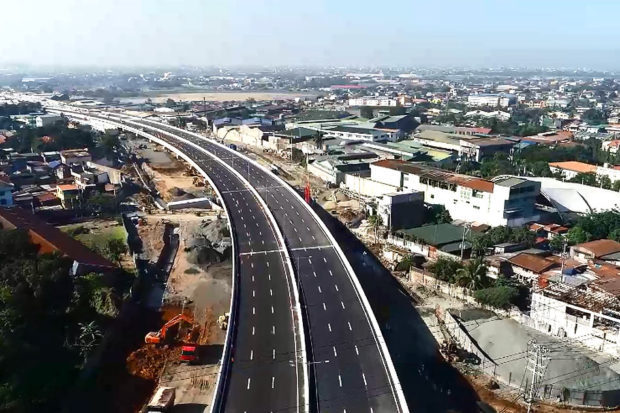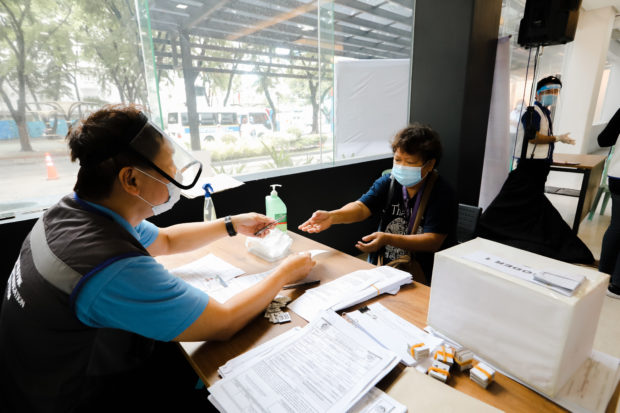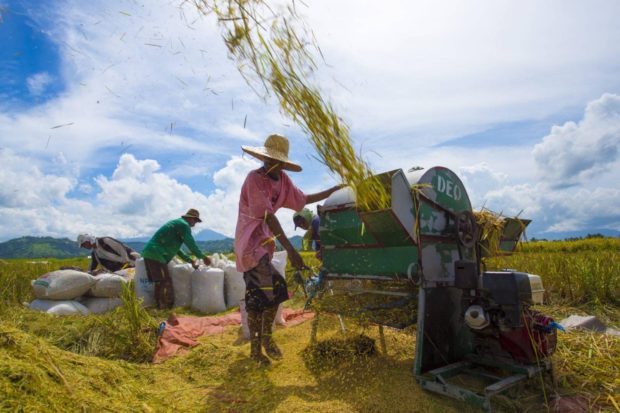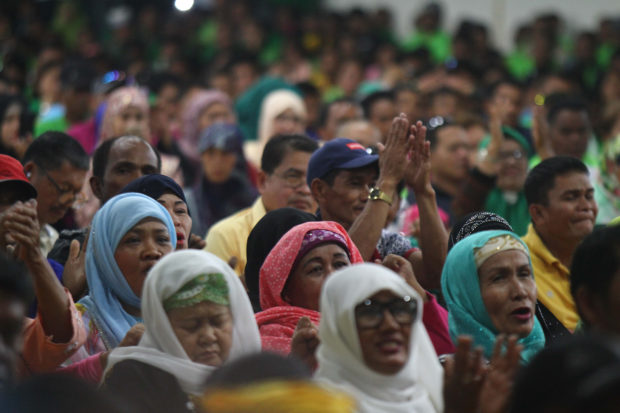Paving the way to a more inclusive Philippines
BBB: Laying the foundations of economic recovery

‘Asia’s next premier gateway’ Clark International Airport’s new passenger terminal building was completed in end-September 2020 and is expected to operate in early 2021.
The government’s “Build, Build, Build” (BBB) program has been heralded as the cornerstone of the country’s recovery, as investments in infrastructure are said to have the highest multiplier effect on the economy.
“We have to continue prioritizing the infrastructure program to immediately create jobs, encourage investments and increase economic activity,” Finance Secretary Carlos Dominguez III said in August.
Hence, the government is aggressively ramping up spending for infrastructure projects amid the pandemic as the Build, Build, Build initiative will play a pivotal role in generating quality jobs, contributing to capital formation, spurring inclusive growth, ensuring economic recovery and creating a more resilient Philippines.
In fact, the government approved a long list of 104 infrastructure flagship projects worth P4.1 trillion as part of the Build, Build, Build pipeline in September 2020. In response to the effects of the pandemic, the list now includes additional health and information technology infrastructure that will allow Filipinos to better adapt to the “new normal.”

The North Luzon Expressway (NLEx) Harbor Link was the first big-ticket project to be completed during the general community quarantine period.
A total of P1.1 trillion is embedded in the proposed 2021 national budget for strategic infrastructure development to create jobs and catalyze business activities all over the country.
Article continues after this advertisement“As part of the recovery program, we propose to ramp up our infrastructure spending by next year, and our estimate is that this will create a million jobs,” Acting Socioeconomic Planning Secretary Karl Kendrick Chua said during the budget hearing of the Development Budget Coordination Committee in September 2020.
Article continues after this advertisementAround 1.5 million jobs were created in 2020 due to the Build, Build, Build program. This is on top of the 5 million jobs already provided by President Duterte’s flagship program from 2016 to 2019, according to the Department of Public Works and Highways.
No Filipino will be left behind with the National ID system

Registering for the national ID is safe, with precautionary measures and health standards in place.
Why is the Philippine Identification System (PhilSys) crucial in these challenging times?
Republic Act No. 11055, or the PhilSys Act, signed into law in 2018, aims to promote seamless delivery of service, improve the efficiency, transparency, and targeted delivery of public and social services, enhance administrative governance, reduce corruption and curtail bureaucratic red tape, to avert fraudulent transactions and misrepresentations, to strengthen financial inclusion, and to promote ease of doing business.
In establishing a central identification system for all Filipino citizens and resident aliens in the Philippines, all forms of government assistance and services will reach every Filipino family, enabling even the most marginalized facilities to benefit significantly. Such a system would have also simplified the process of providing support to vulnerable groups amid this pandemic, ensuring that no Filipino will be left behind.
In October, the government said it planned to get the personal data of 9 million Filipinos—5 million household heads and other adult household members—in 32 provinces where there are low COVID-19 active cases. The government prioritized heads of low-income families so that their national IDs would, later on, serve as a valid proof of identity whenever there’s a need to distribute social assistance. Their national ID will also enable them to access basic banking services by having valid proof of identification, protecting them from predatory lending practices.
As of December 18, there are over 9 million individuals from low-income households already completed Step 1 of the registration process. This step involves the house-to-house collection of demographic information and appointment-setting for Step 2.
Modernizing Philippine agriculture

The rice tariffication law opened the Philippine rice market and lowered the price of the country’s staple for more than 100 million Filipinos.
Despite initially drawing flak when it was enacted early last year, Republic Act No. 11203, or the rice tariffication law, is now helping sustain the Philippine agriculture sector’s growth even amid the pandemic’s challenges ensuing lockdowns implemented since March.
The law, which removed quantitative restrictions or government-imposed limits on rice importation, was envisioned to achieve the twin objectives of food security and increased incomes for local farmers. To a certain degree, this global health and economic crisis is now showing realized benefits from the rice tariffication law.
Even during the pandemic, the price of rice has remained low and predictable. On the average, today’s Filipino consumer enjoys a reduction in the price of rice of P9 per kilogram compared to its peak in 2018.
According to the Philippine Statistics Authority (PSA), the agriculture sector grew in the third quarter, albeit at a slower pace, by 1.2 percent, led by the palay and cacao industries. Palay production, in particular, grew by 15.2 percent compared to last year. Meanwhile, the country’s total rice stocks inventory was also 16.1 percent higher year-on-year.
The rice tariffication law has also ensured stable food supply amid the community quarantine.
“In the most difficult of times, agriculture shone as one of the brightest spots of our response to the COVID-19 pandemic. We have seen steady, positive growth in agriculture, even as other sectors shrunk, during the government-imposed lockdowns,” the DOF said.
Amid the pandemic, agriculture remained a top priority in the government’s socioeconomic response. Under the first round of fiscal stimulus Bayanihan 1, some P8.5 billion had been allocated for the Rice Resiliency Project alone, which provided hybrid and inbred rice seeds and fertilizers. Under Bayanihan 2, a heftier allocation of P24 billion covered productivity enhancement, income enhancement, social protection, and social amelioration for farmers.
On top of that, the government is investing in irrigation for over 2.3 million hectares of farmland under the National Irrigation Administration; for nearly 370,000 metric tons of palay as buffer stock under the National Food Authority; and for the construction and rehabilitation of fish ports.
For 2021, the Department of Agriculture has been allocated a P85.6-billion budget, close to a third of which will fund banner programs for seven agricultural industries: rice, corn, high-value crops, livestock, fisheries, organic agriculture and halal food production.
Establishing lasting peace and prosperity

The Bangsamoro Autonomous Region in Muslim Mindanao clinches the second top spot among the regions in Mindanao with the highest growth rate in 2019.
Close to two years since the Bangsamoro Organic Law (BOL) was ratified, the Bangsamoro government has made significant headway in laying down the crucial foundation for lasting peace and prosperity in the Bangsamoro Autonomous Region in Muslim Mindanao (BARMM).
The BOL ratification, which created a Bangsamoro government with greater autonomy and resources, led to milestones that are expected to bring progress to the region.
The Bangsamoro government is solidifying the public institutions in the regions. Since the inauguration of the Bangsamoro government and parliament, significant gains have been achieved. These include receiving the most number of Seals of Good Local Governance among the regions in Mindanao in 2019; the enactment of the Bangsamoro Administrative Code; and the successful turnover of 63 barangays in Cotabato province and the City of Cotabato to the BARMM.
With stronger public institutions, the BARMM has also been able to deliver positive outcomes across several fronts: in terms of economic growth, health care, planning and administration, governance, as well as social welfare.
For instance, the BARMM saw its gross regional domestic product (GRDP) expanding by 5.9 percent in 2019, enabling it to rank second among Mindanao regions in terms of growth rate. Growth and development in the region is key to addressing the socioeconomic roots of insurgency.
Among the key development successes of the Bangsamoro government are in health. Recently, the BARMM completed 94 percent of measles-rubella immunization, equivalent to 470,308 children under five years of age. A social protection program partnership with the United Nations, meanwhile, will put in place a system aimed at reducing social and economic risk and vulnerability, and at alleviating extreme poverty and deprivation in the BARMM.
To continue improving the delivery of public services, the Bangsamoro Parliament approved the Bangsamoro Administrative Code, which defines the structural, functional, and procedural principles and rules of governance of the BARMM.
In November of this year, the first Bangsamoro Development Plan 2020-2022 was also launched. This plan aims to accelerate economic growth in the region while helping “[uplift] the lives of the Bangsamoro and [establish] the foundations of self-governance through moral governance.”
The BARMM has made significant strides in improving the lives of its people and addressing some of the social inequities that are at the heart of past conflict in the region. With continued support and encouragement from the rest of the country, the BARMM will be able to reach the fruits of peace and prosperity in the region.